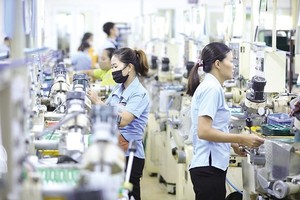
In his view, neighboring nations are strongly blooming thanks to their effective mechanism – policy system and their focus on science and technology with a good relationship among the government – businesses – scientists.
Mr. Quoc defined an innovative urban area as a place where there are many famous multi-national corporations with trading breakthroughs, or there exist many discoveries from universities and scientific research organizations, or there are even a number of startup businesses with innovative ideas.
New York, London, and Paris have been called innovative cities for hundreds of years, he said.
Recently, many smaller cities in Europe and America have also become experts in high technology such as Austin City of the USA, the ‘Silicon Hills’ with giant hi-tech corporations like Dell, IBM, Amazon and Facebook; Stockholm City of Sweden, the ‘Unicorn Factory’ of the whole Europe with billion-USD-worth companies like Spotify, King Game; or Bangalore City of India, the software destination of the world with Wipro, Infosys, and Google’s Research and Development Center, he added.
When commenting on his experience after his official visits to developed countries, Mr. Quoc shared that decades ago, many nations in the Asia – Pacific area built their own model of ‘technological and innovative city’, so this concept is not new anymore.
Such cities like Tsukuba of Japan or Daejeon of the Republic of Korea are known as scientific and technological cities since they all have numerous of research centers, leading universities on science and technology.
They also launch special policies to attract talents and businesses like tax incentives, very low fee of equipment use and high-tech equipment manufacturing, preferential rental fee of accommodation and working devices for scientists. Take Tsukuba as an example. The house rental fee there is only one-fifth of that in Tokyo.
Mr. Quoc also stated that many countries are now willing to pay billions of USD for scientific and technological research, and that the core point lies in the implementation mechanism and the investment method.
He illustrated by citing the Korea Institute of Industrial Technology (KITECH) in Bucheon City, which spends around tens of millions of USD for investment and is still happy with the revenue of only a few million USD. If a business wants to manufacture a product but has financial limit, it should bring its idea to KITECH, where it can be supported with millions of USD and needs to pay back a symbolic sum of money. This shows the city’s great encouragement on creativity. When the products are launched into the market, the government then can impose a tax to take back necessary money.
From what he witnessed in many nations, Mr. Quoc shared his ideas on the direction for the development of innovative urban areas in HCMC, consisting of SHTP, the Vietnam National University Ho Chi Minh City, and the administrative area in District 2.
In his view, the first step to do is for the government to invest into high-tech infrastructure.
The next step is to build a basic institution, including training institutes, centers to research and then transfer technologies to suitable businesses, an environment with good policies and mechanism to boost innovative activities, and high-quality human resources available for businesses to employ.
The final step is for the government to introduce supporting policies towards companies when they launch their innovative products into the market.
It is noticeable that in the latest visit to the Republic of Korea in May 2018, SHTP was able to create a partnership with the key laboratory on robot of the Korean Science and Technology Academy to carry out the program for the implementation of robots in healthcare and manufacturing.
SHTP also cooperated with KITECH in the training of 5 to 10 technological experts per year to manufacture precise molds.
























